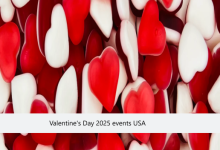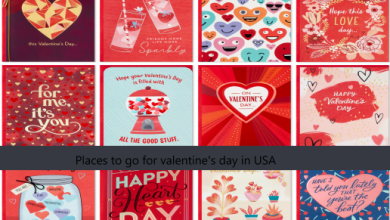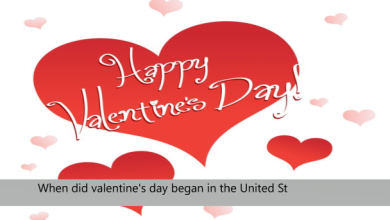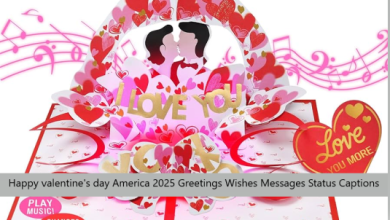10 Valentine’s Day Facts for You

Valentine’s Day is an occasion celebrated with flowers, heartfelt cards, chocolates, and romantic dinners, but there’s so much more to this holiday than meets the eye. Whether you love or loathe February 14th, its rich history, cultural significance, and surprising traditions make it far more interesting than a simple day for romance.
1. Valentine’s Day Has Its Roots in Ancient Rome
Valentine’s Day as we know it has origins in the Roman festival of Lupercalia, celebrated from February 13-15. This pagan holiday involved rituals aimed at purifying the city and bringing fertility to its people.
Later, in 496 AD, Pope Gelasius I replaced Lupercalia with St. Valentine’s Day, honoring the martyrdom of St. Valentine, supposedly a Christian priest who performed secret marriages. The romantic aspect came much later, but the roots of love and union began with this transformation.
2. The First Valentine’s Day Card Dates Back to the 15th Century
The tradition of giving Valentine’s Day cards can be traced back to Charles, Duke of Orleans, in 1415. While imprisoned in the Tower of London, Charles penned a poem to his wife, which many consider the first Valentine’s Day card in recorded history.
Today, the Valentine’s Day card industry is thriving, with around 145 million cards exchanged annually in the U.S. alone—making it the second-largest card-sending holiday after Christmas.
3. Cupid Has a Mythological Backstory
That little cherub with a bow and arrow wasn’t always a symbol of love! Cupid originated in Roman mythology as the god of desire and was inspired by the Greek god Eros. According to mythology, Cupid’s arrows could make anyone fall passionately in love—or sometimes the opposite. Over time, Cupid evolved into the more playful and benign figure we associate with romance today.
4. Over 250 Million Roses Are Produced for Valentine’s Day
It’s no secret that red roses are the quintessential symbol of love and passion. Every Valentine’s Day, approximately 250 million roses are grown specifically for the occasion. The color red was historically associated with Venus, the Roman goddess of love, which is why it remains the flower of choice for wooing a Valentine.
And here’s a bonus fact—California produces 60% of American roses, but demand often outpaces domestic supply, leading to imports from countries like Ecuador and Colombia.
5. Valentine’s Day is Beloved Worldwide (With a Twist!)
While Valentine’s Day has many similar traditions across the globe, there are some unique cultural takes:
- Japan: Women are the ones who give chocolates to men on Valentine’s Day. Men return the favor a month later on “White Day.”
- South Korea: Valentine’s Day, White Day, and a third day called “Black Day” are part of an official love calendar. Black Day (April 14) is where singles celebrate by eating jajangmyeon, a dish of black bean noodles.
- Denmark: Instead of roses, lovers exchange pressed white flowers called “snowdrops.”
6. The Heart Shape Wasn’t Always Romantic
The heart symbol is synonymous with love today, but its origins are a bit less romantic. Artists in the past used the heart shape to describe ivy leaves, which were associated with fidelity. Over centuries, it evolved to represent human emotions and romantic love, becoming one of the world’s most iconic shapes.
7. Chocolate Became a Valentine’s Day Staple Thanks to the Victorians
You can thank Richard Cadbury for the tradition of gifting chocolates. During the Victorian era, the Cadbury Company introduced heart-shaped chocolate boxes filled with their finest confectioneries. It was an instant hit, and these boxes became synonymous with the holiday of love.
Currently, Americans spend over $1 billion on Valentine’s chocolates annually. Sweet, right?
8. More Pets Than Ever Receive Valentine’s Day Gifts
Valentine’s Day isn’t just for humans anymore. According to the National Retail Federation, approximately 27% of pet owners buy Valentine’s Day gifts for their furry friends. This heartwarming trend shows that unconditional love comes in many forms—even if it’s from a wagging tail.
Some popular pet gifts include heart-shaped treats, chew toys, and even Valentine-themed outfits. Pet gift spending during Valentine’s Day now averages over $1 billion annually!
9. Single? Valentine’s Day Can Still Be for You
Not in a romantic relationship? Valentine’s Day doesn’t need to be exclusive. Popularized by the sitcom Parks and Recreation, Galentine’s Day (February 13) has become an empowering tradition for single women to celebrate love and friendship. Similarly, Singles Awareness Day (February 15) highlights self-love and independence.
Grab some friends or treat yourself—Valentine’s Day can be about more than romantic love!
10. Americans Spend Billions on Valentine’s Day
Valentine’s Day is big business. On average, Americans spend over $20 billion annually on gifts, cards, flowers, chocolates, and experiences like dinners and trips. The amount often spikes depending on economic optimism each year.
The most popular Valentine’s Day gifts include:
- Chocolate and candy (more than 50% of people purchase sweets)
- Flowers (especially red roses)
- Jewelry (accounting for nearly 20% of Valentine’s Day spending)
- Experiences like dining out or trips
Interestingly, millennials and Gen Z prioritize experiences over material gifts, marking a shift in how younger generations celebrate the day.






















